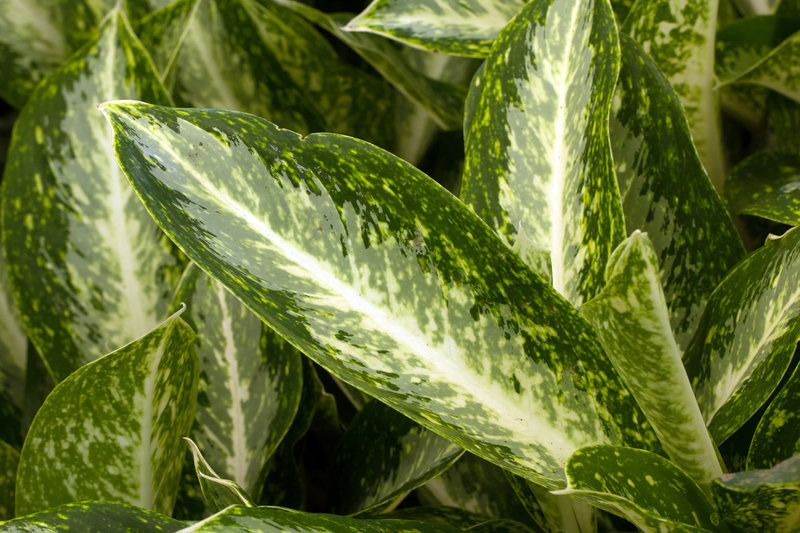Easy Steps to Sharpen Your Garden Shears Without Leaving Home
Posted on 25/10/2025
Easy Steps to Sharpen Your Garden Shears Without Leaving Home
Garden shears, also known as pruning shears or secateurs, are essential tools for anyone maintaining a thriving garden. Over time, these indispensable implements can become dull and less efficient, making yard work a laborious task. Fortunately, you don't need to be a professional or spend money at a tool shop to sharpen your garden shears. In this comprehensive guide, you'll discover easy steps to sharpen your garden shears without leaving home. Restore your tools with minimal effort and achieve those clean, precise cuts your plants need to flourish!
Why Sharpening Garden Shears Is Important
A dull blade damages plant stems, introduces disease, and increases your workload. Keeping your garden shears sharp ensures:
- Healthier cuts that speed up plant healing
- Reduced physical strain while pruning
- Extending the lifespan of your gardening tools
- Better-looking hedges, bushes, and flower beds

What You Will Need to Sharpen Garden Shears At Home
Before you get started, gather these essentials:
- Protective gloves - Always put safety first
- Sturdy work surface - Prevents accidents and ensures precision
- Cleansing materials - Soapy water and a sponge or rag
- Steel wool or wire brush - Removes rust and stubborn residue
- Sharpening tool - Options include a flat file, diamond sharpening stone, or sharpening rod
- Lubricating oil - Prevents rust and smooths movement
- Phillips or flathead screwdriver - For disassembling shears (optional but recommended)
Step-by-Step Guide to Sharpening Your Pruning Shears Without Leaving Home
Sharpening your garden scissors or secateurs is straightforward and rewarding. Here's a detailed process:
Step 1: Clean Your Garden Shears Thoroughly
Dried sap, dirt, and plant debris can clog up your blades. Using soapy water and a sponge, scrub the shears until all visible residue is gone. For tough spots or rust, use steel wool or a wire brush. Make sure your shears are completely dry before proceeding.
Step 2: Disassemble (If Possible)
While you can sharpen shears when assembled, disassembling allows for a more thorough job. Use a screwdriver to remove the central bolt and separate the blades. Lay them flat on your work surface.
Step 3: Inspect the Blades
Look closely at the blades under good lighting to identify nicks, chips, or areas of excessive wear. Small imperfections can usually be smoothed out during sharpening. If blades are heavily damaged, consider replacement.
Step 4: Choose Your Sharpening Tool
There are several effective methods to sharpen your garden shears at home:
- Flat file: Best for major reshaping or very dull blades. Run the file along the beveled edge in the direction of the blade's curve.
- Diamond sharpening stone: Perfect for honing and maintaining an edge. Add a little water or oil to the stone for smooth sharpening.
- Sharpening rod: Useful for fine-tuning curved blades and getting into tight spots.
Step 5: Sharpen the Beveled Edge
Every garden shear blade has a beveled cutting edge and a flat inside edge. Always sharpen only the beveled side--the flat edge should remain untouched to maintain proper blade function.
How to sharpen the edge:
- Grip the blade firmly (wearing gloves) and position your file or stone at the same angle as the bevel (usually 10-20 degrees).
- In one smooth motion, draw the file away from your body, following the curve from base to tip.
- Repeat this stroke 5-15 times or until you feel a clean, sharp edge. Avoid sawing back and forth.
- For serrated blades (rare in shears), use a sharpening rod, working along each serration gently.
Step 6: Remove the Burr
After sharpening, a thin metal burr may develop along the flat side of the blade. Lay the blade flat on your sharpening stone and give it a light, single pass to knock off the burr (do not sharpen this side).
Step 7: Clean, Lubricate, and Reassemble
Wipe the blades clean of metal filings. Add a drop or two of lubricating oil to the pivot point and along the blades--this keeps them moving smoothly and protects against rust.
Reassemble the shears by reinstalling the pivot bolt and tightening it firmly, but not so tight that the blades bind.
Step 8: Test the Shears
Try a test cut on a piece of scrap paper, cardboard, or a thin twig. The shears should slice cleanly with little effort. If further sharpening is needed, repeat the process until satisfied.
Maintenance Tips: Keep Your Garden Shears Sharp Longer
Regular care makes future sharpening easier and your pruners last longer. Here's how:
- Wipe after every use: Remove sap and moisture to prevent rusting.
- Store shears indoors: Humid environments hasten corrosion and dullness.
- Light oiling: Apply a small amount of oil periodically, especially before long-term storage.
- Tighten bolts: Loose moving parts can cause uneven cuts and damage the tool.
- Sharpen regularly: Don't wait until your garden scissors stop cutting--touch up the edge after every gardening session.
Common Mistakes to Avoid When Sharpening Garden Shears at Home
Sharpening your gardening tools is easy, but these common pitfalls can undermine your results:
- Using the wrong angle: Excessively steep angles weaken the edge or prevent good cuts.
- Sharpening both sides: Only sharpen the beveled side to maintain proper blade alignment.
- Forgetting to remove rust: Rust blunts blades and makes sharpening less effective--always clean first.
- Skipping lubrication: Dry blades and pivots are prone to seizing and wearing out faster.
- Over-sharpening: Too much metal removal shortens blade life. Only sharpen as needed.
Sharpening Different Types of Garden Shears
The steps above apply to most manual pruning and hedge shears, but some other tools benefit from similar at-home sharpening techniques:
- Hedge shears: These have long, straight blades--sharpen with a flat file or sharpening stone, following the existing angle.
- Bypass pruners: Feature two curved blades that slide past each other--follow the curve as you sharpen the beveled edge only.
- Anvil pruners: Have a single cutting edge that closes onto a flat surface--only sharpen the cutting blade.
- Loppers: Use the same approach but may have thicker blades needing a more robust file.
When to Replace Instead of Sharpening Your Garden Shears
Routine sharpening keeps your shears going strong, but sometimes replacement is the safest choice. Consider replacing your shears if:
- The blade is badly chipped or bent beyond repair
- Rust has eaten into the metal, making sharpening impossible
- The pivot mechanism is damaged or broken
- The handles are cracked or don't open/close properly

Frequently Asked Questions about Sharpening Garden Tools at Home
-
Can I use a kitchen knife sharpener on my garden shears?
It's best to use a file or sharpening stone designed for thicker, outdoor blades. Knife sharpeners may work in a pinch, but handle with care and follow the correct angle. -
How often should I sharpen my garden shears?
For heavy users, check and sharpen monthly. Occasional gardeners can sharpen once or twice per growing season. -
Are there commercial sharpening kits worth trying?
Yes! Tool-specific sharpening kits are convenient and usually include a guide for beginners. However, traditional files and stones work just as well for most people. -
Is professional sharpening necessary?
No! Unless your shears have major damage, home sharpening is effective, affordable, and quick.
Conclusion: Sharpen Your Garden Shears With Confidence--All From Home!
Taking care of your garden tools is simple and satisfying. By following these clear, practical steps to sharpen your garden shears without leaving home, you'll keep your pruners ready for action.
- Clean and inspect your blades
- Choose the right sharpening tool
- Maintain the original bevel angle
- Lubricate and store tools safely
Save time, save money, and keep your garden blooming--start sharpening at home today!




